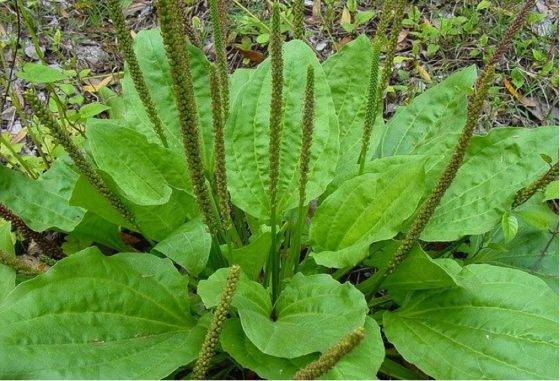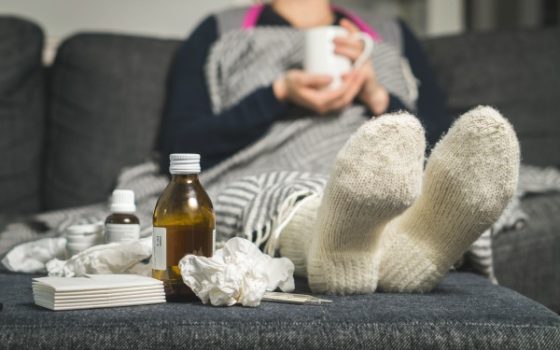This article was originally published by Zoey Sky at NaturalNews.com

Foraging is a useful skill to have because it can help you identify wild edibles. It’s even more valuable when SHTF because it can help you stay alive if you lose your survival gear and food supplies. (h/t to BioPrepper.com.)
Once things have settled down after a disaster, assess your needs. Your first priority is to locate food, and knowing how to find edible plants can help solve this problem.
Tips for finding wild edibles
Keep these general tips in mind when foraging for edible plants:
- Colored berries that you’re not familiar with. Unless you know you’re looking at blackberries, blueberries, or raspberries, avoid colored berries.
- Don’t bother testing a plant that’s in short supply. Try to find a more abundant resource before you resort to a small outcropping of a certain plant.
- Don’t eat mushrooms or fungi. The Universal Edibility Test (detailed below) doesn’t work on toxic mushrooms because they will affect your nervous system. These effects may take days to manifest, but by then it will be too late for treatment.
- Don’t touch plants in polluted areas. Roadside plants are exposed to car exhaust and other chemicals (e.g., antifreeze) that can contaminate them. Don’t eat plants near a polluted water source because they can also be contaminated.
- Never eat anything moldy, rotten, or too soft. In general, mold on plants could harm you.
- A plant with an almond-like smell. This means the plant may contain cyanide, which is poisonous.
- Shiny leaves or leaves that are grouped in threes. This plant may be poison ivy, which you must avoid.(Related: Why you should learn about herbs in your area: Wild edibles and medicinal plants can offer food security.)
100% organic essential oil sets now available for your home and personal care, including Rosemary, Oregano, Eucalyptus, Tea Tree, Clary Sage and more, all 100% organic and laboratory tested for safety. A multitude of uses, from stress reduction to topical first aid. See the complete listing here, and help support this news site.
Other general signs to avoid in plants include:
- Beans, bulbs, or seeds inside pods
- A bitter or soapy taste
- Fine hairs, spines, or thorns
- Milky or discolored sap
The Universal Edibility Test
Many plants are poisonous, and eating a toxic plant can cause reactions that range from relatively mild, like vomiting, to severe ones like a coma, organ failure, or even death. A reliable method that you can use to determine if a plant is safe to eat is the “Universal Edibility Test” (UET), which was developed by the U.S. Army.
The tips below are from the U.S. Army Survival Manual FM21-76. Take note that some experts don’t believe that this test is effective since some plants may cause serious adverse reactions from skin contact.
Always carry a field manual when foraging and use the UET as a last resort. Fast for eight hours before testing a plant, and choose something abundant, so you don’t waste your time and risk your life for something that won’t even keep you full.
Not all parts of a plant can be poisonous. To illustrate, a plant with poisonous leaves may have edible roots and stalks. Take the plant apart into its main components for the UET.
Skin contact test
- Crush up the plant part you want to eat, and don’t combine parts. Rub the crushed part on the inside of your wrist or elbow for 15 minutes. Observe the area for the next eight hours. You’re restricted to water for this part of the test. If the leaf causes reactions like bumps, burning, itching, pain, or redness, don’t eat the plant. If your skin is fine after eight hours, proceed to step two.
- Hold the plant to your closed lips for three minutes. If you feel any burning, itchiness, tingling, or an unusual reaction, throw away this part of the plant and start step one with another part.
- If there’s no lip reaction, place the plant on your tongue for 15 minutes. If you feel a burning, itching, or tingling, spit out the plant part, rinse out your mouth, and try another plant part.
Chew test
- A plant that passed the skin contact test can be used to the chew test. Chew the plant part in your mouth, but don’t swallow. Keep the chewed up plant in your mouth for 15 minutes, then wait for any of the previously mentioned reactions.
- If the plant causes a bad reaction, spit, rinse, and repeat. Once 15 minutes pass and you’re fine, swallow what’s in your mouth. If you feel nauseous or other negative symptoms, make yourself vomit then drink plenty of water.
- Once you’ve safely swallowed the plant, wait eight hours to test it properly. Again, you’re restricted to water during these next eight hours.
The bigger bite
- If the plant passes the chew test over the next eight hours, and you don’t suffer from negative side effects, try eating at least 1/4 cup of the plant part.
- Wait another eight hours, and drink only water. This is the final stage of the UET. If eight hours pass by and you’re okay, the plant part you tested is safe to eat. Repeat all three parts of the UET if you want to eat other parts of the plant.
When testing plants, remember that a plant can taste bad or bitter even if it’s edible. If you’re starving in the wild, you can’t afford to be fussy. Younger wild edibles won’t be as bitter and the more mature the leaf, the more bitter it will generally taste. You can boil plants to reduce the bitterness, but some plants might need to be boiled several times.
The “Rule of threes”
Remember the “Rule of threes:”
- Three hours without protection from the cold
- Three days without water
- Three weeks without food
- Three minutes without air
You also need to prioritize your immediate safety. Stay calm so you can act quickly and escape from a burning home or sinking vessel.
This article is no substitute for a field guide. Before eating or testing an unknown plant, use your common sense and follow the general guidelines from the UET discussed above when searching for wild edibles.
You can learn more about how wild edibles and foraging at FoodSupply.news.
Sources include:









0 Comments